Cookie
This website requires cookies to provide all of its features. For more information on what data is contained in the cookies, please see our Privacy Policy page. To accept cookies from this site, please click the Accept button below.

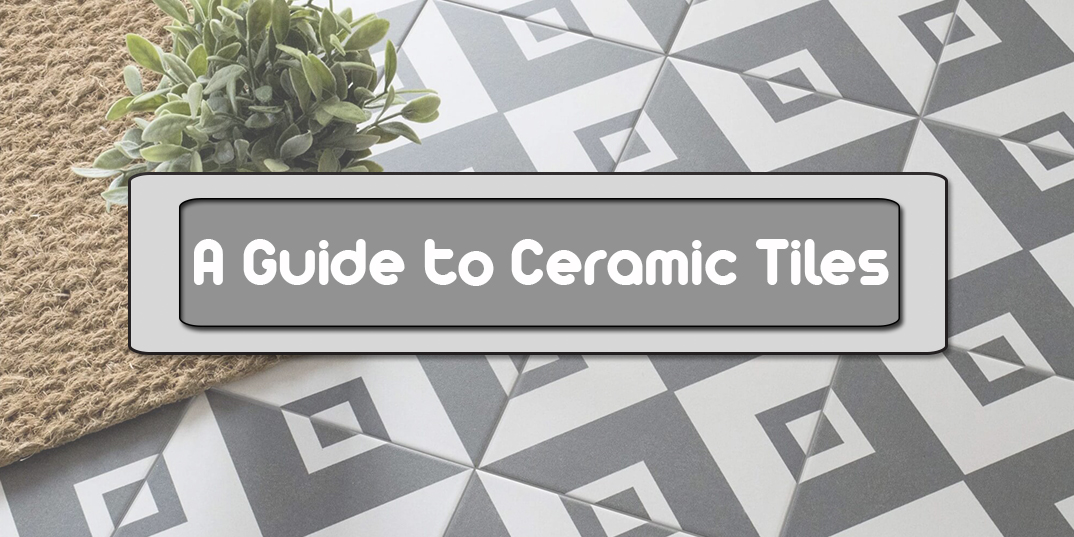
Ceramic is probably the most recognisable tile material and is popular for a vast array of wall and floor designs. Ceramic tiles are available in many different styles and designs and are selected for a range of bathroom and kitchen interiors. These tiles are made from natural materials and have been used for hundreds of years as a decorative product. You can acquire them from tile shops and also online. European countries like Italy and Spain are renowned for their manufacturing and production of Ceramic Tiles. In addition to residential projects, ceramic is also acquired for commercial properties. The UK tile market was once dominated by ceramic but since the influx of porcelain, quartz and natural stone varieties it certainly has less of a monopoly over the industry. However, ceramic tiles certainly still remain a sought after choice among homeowners, designers and developers alike.


When it comes to ceramic tiles, you have a vast array of different options. As a result of the extensive range of coloured glazes and moulds available, ceramic tiles can be manufactured in order to produce a number of styles. From brick effect tiles to marble effect, stone effect, and wood effect varieties, you have plenty to choose from. Furthermore, there are plain, floral, textured, Moroccan patterns and virtually every other style you can think of. In this section we are going to take a closer look at the ceramic tile options available.
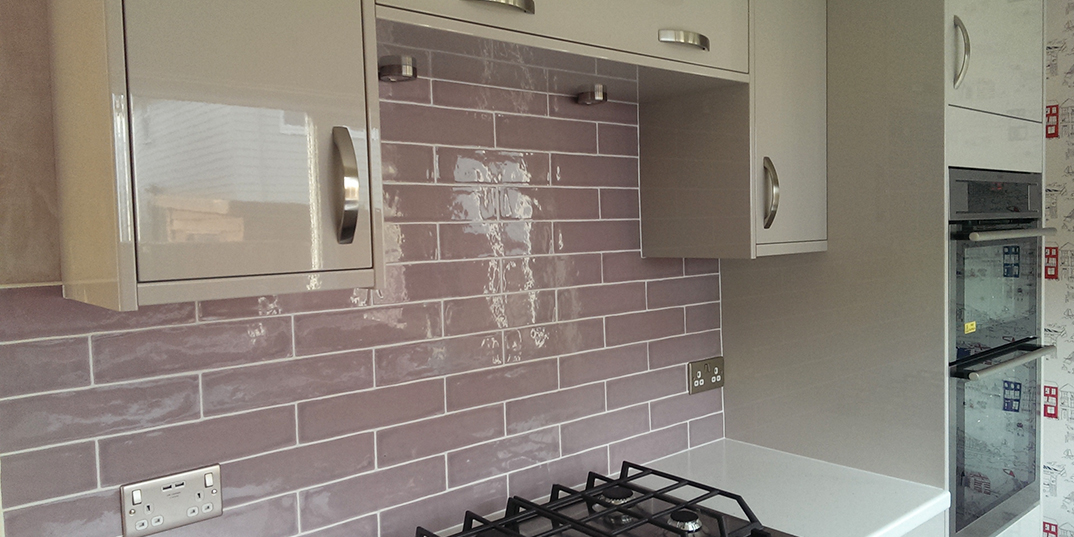

Brick style ceramic tiles have a bevelled edge and depending on the supplier, usually fall under two categories; Subway and Metro. They tend to be displayed in a brick formation (running bond) on walls and work superbly as either a feature or backsplash. These tiles have a high gloss finish which not only helps to emphasise colours like black, white, cream, red and grey but also provides a surface which is easy to clean and wipe dry, particularly within difficult areas like a kitchen wall or within a shower cubicle. Subway tiles are a versatile option and not only can they be arranged in a classic brick formation but they are also displayed in herringbone and chevron patterns. Not only are Subway tiles acquired for home designs but they are also chosen for shops, cafes, restaurants and bars.


Marble has a veined appearance and is a popular natural stone for both walls and floors. Marble Effect Ceramic tiles offer a natural appearance and all the practical benefits you would expect from a manmade product. These tiles are selected for backsplash walls and features. You can acquire marble effect ceramic tiles in colours which are not usually associated with this natural stone like black and white. Popular marble effect ceramic tile colours include cream, white and grey. The marble appearance can be emphasised further by a high gloss finish. You can acquire ceramic tiles which have an appearance which represents popular marble varieties like Carrara and Crema Marfil.


A good way of introducing a natural look within your home is by acquiring stone effect ceramic tiles. There are a vast array of different stone effect styles to choose from including Marble, Travertine, Sandstone, Slate and Granite. These tiles are perfect for providing a unique character throughout your home. Not only can the stone style be created by the pattern and look of these ceramic tiles but also the texture, with rock being a particularly well suited finish. Stone Effect tiles can be complemented by natural materials like wood. Marble effect tiles are ideal for producing a timeless appearance.
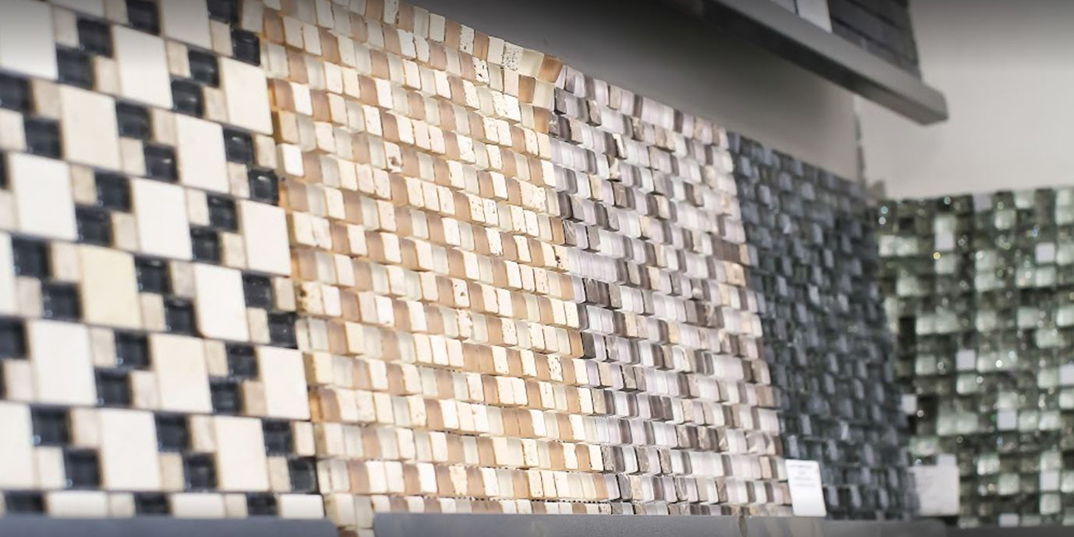

Ceramic tiles are available in mosaic format and can be found in a wide range of shapes and sizes. When it comes to choosing ceramic mosaics, you can select from shapes like square, rectangle, circle and hexagon. These mosaics are attached to mesh sheets which can be applied in various ways including as a backsplash or border. These tiles are put to good use in shower areas and above bathtubs and sink applications. A popular technique is to contrast a standard colour with ceramic mosaics in a different colour, e.g. black and white. Ceramic Mosaic tiles with a polished finish are easy to clean in bathrooms, wet rooms and en suites.


In order to provide additional style you can introduce a border design with ceramic tiles. Border tiles can be arranged both horizontally and vertically on walls. You can use ceramic border tiles directly above a worktop in a kitchen and this not only provides a stylish look but also protects the underlying substrate. Patterned ceramic border tiles are often used on floors in order to complement a plain design. Border tiles offer something a little different to interior designs and certainly provide a unique style. You can either use specific ceramic border tiles or just use standard ceramics including metro, mosaics and floral tiles.
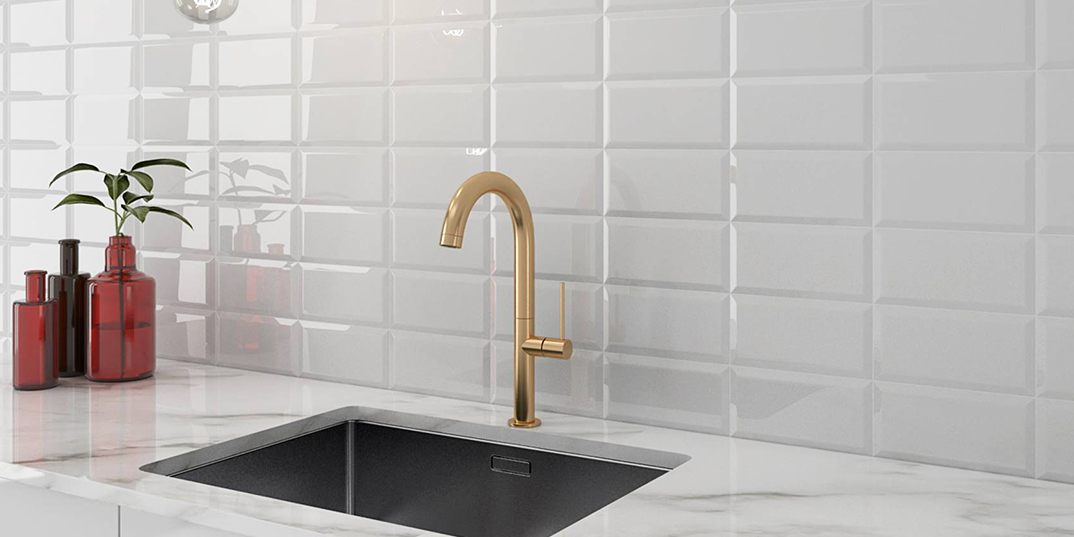

Ceramic tiles with a plain style are sought after for a wide range of projects. Plain white, cream, grey and black ceramic tiles are selected for modern bathroom and kitchen layouts. These tiles are particularly well suited to contemporary layouts in which they provide an understated backdrop. These plain tiles can be contrasted by a decorative pattern and bright colours in order to create a standout look. Cheap plain ceramic tiles with a white colour in sizes like 150x150 are a popular choice among property developers, who are looking to maximise profit margins. Plain cream and beige ceramic tiles are often chosen to produce a neutral style.


Appearance is one way of creating a stylish look but have you ever thought about how texture can transform the style of walls and floors? Tiles with a textured finish react differently to light sources than tiles with a smooth, even finish. Whether you have chosen tiles with a textured pattern finish or maybe stone effect textured tiles, there are plenty of ways you can incorporate these tiles within your interior layout. A feature wall which includes textured ceramic tiles can be a particularly effective way at introducing a real focal point. Popular ceramic textured tiles include wave and splitface designs.


Hexagon ceramic tiles are becoming increasingly popular for modern designs. They are often used as a feature in bathrooms and can even be arranged in consistent fashion from wall to floor which ensures the design ‘flows’ throughout the entire room. Using contrasting tile colours is an effective way of creating a standout décor. You can also use hexagon tiles of the same colour to create a distinctive look. Using hexagon tiles on walls with standard square or rectangular varieties on the floor can provide an interesting design as it brings different style elements together. These tiles work superbly as a backsplash or even within just one part of a room like a shower area.


These are ceramic tiles with a patterned design. Moroccan tiles have a decorative look which transforms the style of walls and floors. These tiles are available in a range of colours and often a multitude of different colours. They work superbly as part of a feature wall or fireplace surround. Moroccan tiles are selected for many parts of the home including porches, hallways and conservatories. The design often comprise of floral designs and geometric shapes. These Moroccan ceramics are selected for kitchen designs as part of backsplash walls. They can also be arranged with plain tiles as a border design.


Tiles with a floral design have been used for years as part of bathroom and kitchen interiors. Modern variations are still selected for contemporary layouts and are perfect for providing a unique design element. Floral tiles which combine two distinctive colours like black and white can be complemented by modern bathroom fittings. These tiles are generally chosen for wall features and tend to have a high gloss finish. The flower patterns can be accentuated by strategically placed lighting including ceiling spotlights. Many well-known ceramic tiles brands have a wide selection of floral tiles available to choose from


Tiles with a wood appearance are perfect for introducing a natural look. Wood effect ceramic tiles are popular for floors and can be arranged in a classic running bond formation. These tiles can also be arranged as a feature on walls. Tiles with a wood style often have a knotted and veined pattern which provides a great depiction of then material itself. Tiles which fall under this category include reclaimed wood effect tiles and traditional oak and walnut styles. These tiles can be complemented by stone effect porcelain tiles. Wood effect tiles are available in colours like brown and grey.


Ceramic tiles can be used in various ways as part of bathroom designs. In years gone by, ceramic tiles were primarily used on walls in bathrooms but modern manufacturing techniques mean they are also suitable for floors. On walls, ceramic tiles are well suited to shower areas, bath surrounds and sink backsplashes. A full tiled ceramic wall is often the most popular option for contemporary bathrooms but sometimes a half tiled wall is chosen and is seen as a more affordable alternative. On floors, ceramic floor tiles with a matt finish are the most popular choice. Ceramic tiles are also selected for variations of bathrooms including wet rooms and en suites.
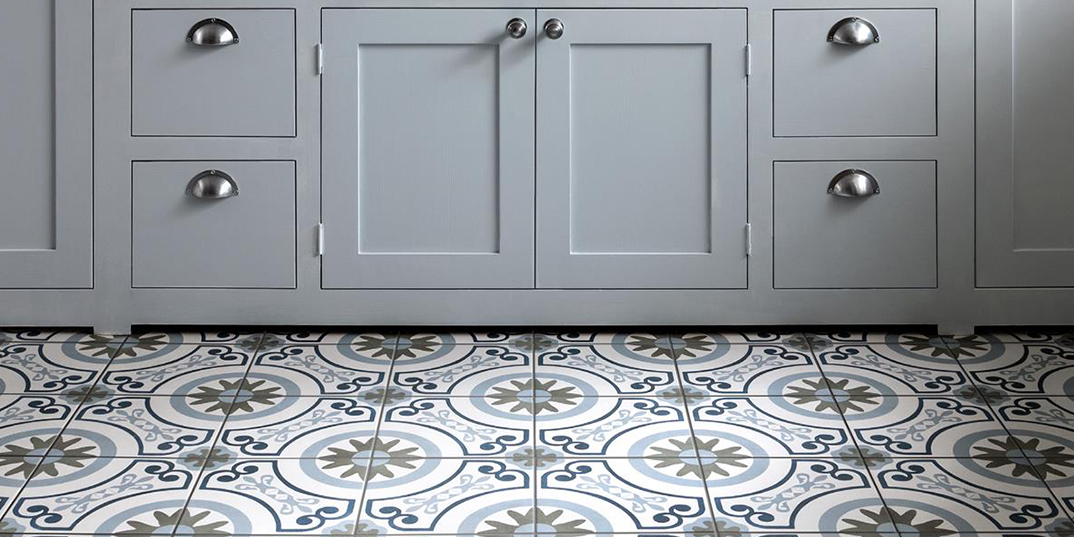

It is no surprise that Ceramic tiles are selected for kitchens. These low maintenance tiles are particularly well suited to backsplash designs and high gloss varieties can be wiped clean and dried with ease. There are plenty of options when it comes to choosing ceramic tiles for your kitchen. Stone and marble effect tiles are both well suited to modern kitchen layouts. Brick effect tiles also work to great effect as part of farmhouse style kitchen designs. Ceramics are generally chosen for kitchen walls and can be complemented by porcelain floor tiles. From standard kitchens to open plan layouts, the versatility of ceramic tiles ensures they are selected for a vast array of designs. Ceramic tiles are popular for DIY projects and a typical project could involve creating a kitchen backsplash wall with these tiles


Fireplace surrounds can be transformed with the use of ceramic tiles. For this, floral patterns and also brick effect tiles are particularly well suited. Ceramic tiles will not only provide a stylish look but can also be cleaned and maintained with ease. Tiling a fireplace or feature wall in a living room can provide a stunning focal point. If you are interested in carrying out a DIY project within your home then tiling a fireplace with ceramic tiles is certainly a project which can be completed with the required planning. There are ceramic tiles which will be well suited to both modern and traditional fireplaces.


The affordability and practicality of ceramic tiles has ensured that they are an obvious choice for commercial projects. Ceramic tiles are selected for cafes, shops, restaurants and hotels. Office workplaces are another place ceramic tiles are chosen for. If you are acquiring ceramic tiles for a commercial project then you will probably have to buy in bulk which could make the job more cost effective. As part of commercial properties you can match ceramic tiles with other durable materials to create a design which is going to stand the test of time. Ceramic tiles with a neutral colour are often preferred as they will match with a range of applications and features.


Before you even begin to start cleaning your ceramic tiles you need to sweep and dust them to ensure they are free from dust and debris. This can also be achieved with a vacuum. Once all surface dust and dirt has been removed it is then time to mop them. The combination of warm water and a mild detergent can be mixed and then a chamois-style mop can be used for the cleaning process. To prevent your ceramic tiles from forming spots from water residue, dry them after cleaning with a lint-free cloth. In terms of general maintenance, you can remove and replace any ceramic tiles which have been chipped or damaged. This is where tiles have an advantage over floor surfaces like carpet as the entire floor does not need to be replaced, just individual tiles.


Ceramic tiles are made from raw, natural materials. They comprise of clay minerals derived from the earth’s crust including feldspar. In years gone by, ceramic tiles were made by hand when wet clay was formed in to a shape by hand or with a wooden tool before being dried in the sun or fired in a hot kiln. These days, machinery is used to make ceramic tiles.


In modern processes; clay, sand, water, feldspar and quartz are initially mixed and grounded to form a ‘body slip.’ At this point in the process, the body slip is made up of around 30% and this moisture needs to be reduced to around 6%. The moisture is extracted through the body slip being put in a dryer and heated.


Following the treatment in the dryer, the materials have been reduced to dust. Now it is time for this dust to be pressed in a large piece of machinery, which is either electrically powered or runs through hydraulics. As a result of ‘dust pressing’ the materials are formed within a set shape and size and in this shaped form it is known as the bisque. Following the dust pressing the material is left to dry in order to extract any additional moisture.


The glaze is what provides the classic ceramic tile appearance and there are many different options available when it comes to the specific glaze, including; matt and high gloss. Colour is added through the inclusion of pigments and a combination of other ingredients. Glazing is common practice when it comes to manufacturing ceramic tiles for the home and commercial markets but it is not an essential process as some ceramic tiles are left unglazed.
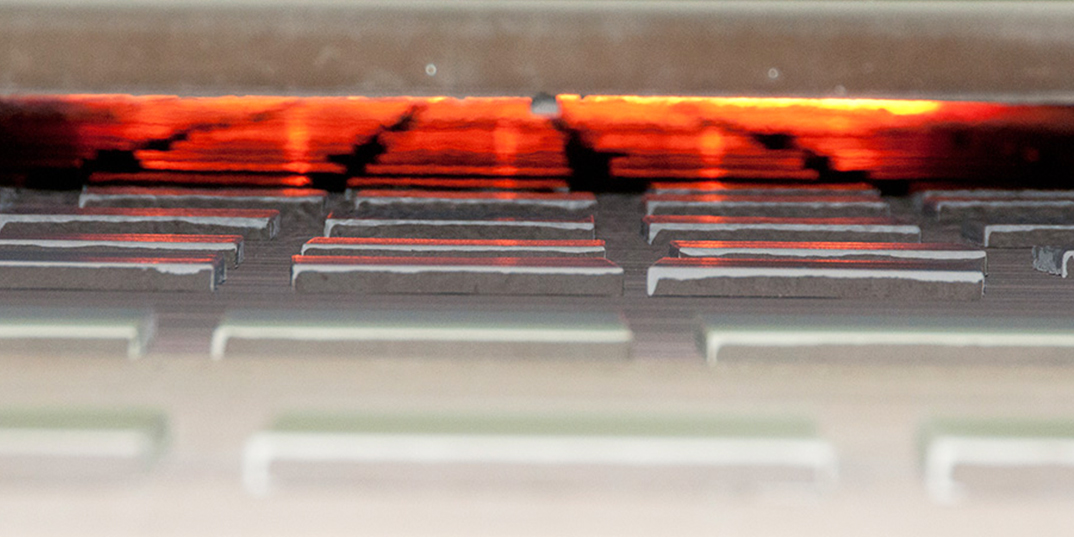

The final process is called ‘firing.’ This is when tiles are placed in a kiln in order to be fired. In modern times, ‘Continuous Kilns’ have replaced traditional models and have made the process of firing a lot more efficient. The ceramics go through the kiln in a rolling motion. The kiln can reach a maximum temperature of 2,500 degrees Celsius. As the tiles move through the kiln they get to the cooling section. The fact these ceramic tiles are fired just once provides ceramic tiles with their strength. Whereas ceramic tiles were once only considered suitable for walls, modern ceramic tiles are also a viable option for floors due to their increased level of strength and durability. This process is called monocottura which means ‘fired once’ in Italian. In order to provide the tile with a greater range of styles and colours, the tiles can be fired again and this process is called ‘bicottura.’ Before each firing, a different coloured glaze can be applied.